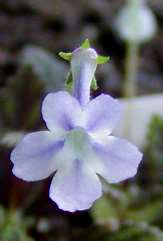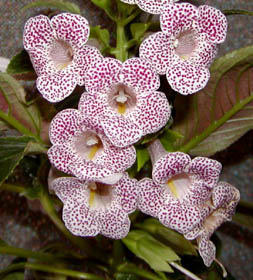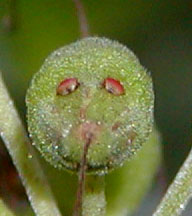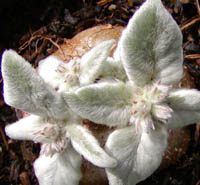
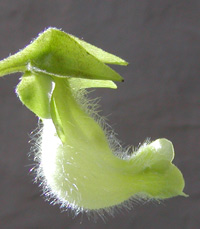
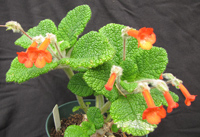
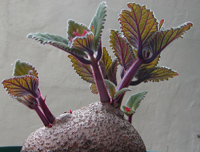
What Is A Sinningia???
Sinningia & Friends
Welcome to the SINNINGIA and FRIENDS web site. It is intended to provide the sinningia grower with a bit of botanical and horticultural information. It's not scholarship, though -- it's just pictures and observations and opinions, plus facts I got from others!
This project had its (now distant) origin in an educational display (designed and formatted by Debra LaVergne) about Sinningia tubers at the 2003 American Gloxinia and Gesneriad Society convention in Sacramento.
This site is dedicated to the memory of Hans Wiehler and the Gesneriad Research Foundation.
Special thanks to my sinningia mentors Alain Chautems and Mauro Peixoto.
Organization
At the top of each page is a set of links to lists of pages on this site.
- All published species of sinningia, vanhouttea, and paliavana. The list also includes unpublished species which have holding names.
- Hybrids (but only a fraction of the ones that have been made).
- Tuber pictures (I love tubers).
- A variety of other topics, like horticulture, taxonomy, and surly, opinionated ramblings.
There's an erratically maintained site index and a link back to this page (except from this page).
The link always worth checking out is "What's New". Every time a new page or picture is added, a link to it will be provided on the What's New page.
